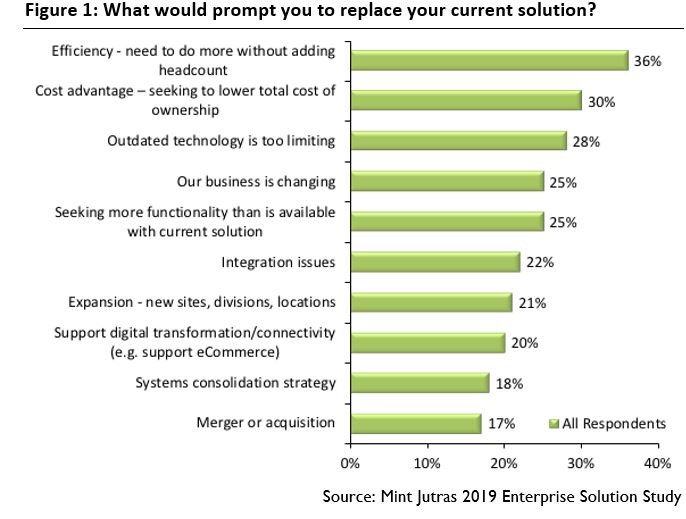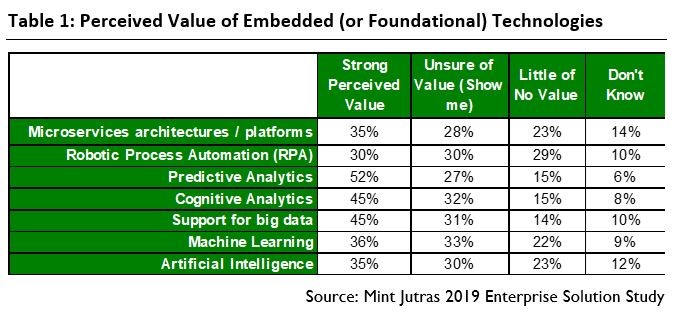Business planning
How cloud accounting can help businesses overcome modern finance challenges

In this article, we address the main hurdles that face finance today and identify technology and tools that can help your practice overcome them.
Finance leaders are no longer just bean counters. While you need to take on responsibility for the business’s transactional reporting integrity, you also need to think and act strategically. You must navigate the global, digital economy’s uncharted waters and guide your organisation towards increased growth and profits.
This can’t happen if you keep doing the things you always have. If old accounting systems and outdated technology tie your hands, you will not keep up with rapid growth in the modern age.
Convincing finance leaders to fix something that isn’t broken is difficult at best. But by not investing in modern technology, you could be doing your business a terrible disservice.
Let go of past perceptions
For decades, replacing business management solutions have been likened to brain surgery – not to be done unless the situation is extremely dire. “Rip and replace” was to be avoided at all costs. But these perceptions are just as outdated as the legacy solutions to which they apply. Early solutions were rigid and inflexible, limited in functionality, hard to install and implement, and even harder to use. Innovation was painfully slow due to rigid architectures and older technology. Why go through all the blood, sweat and tears, not to mention the cost, of implementing a newer solution just to wind up right back where you started?
Have solutions evolved that much? The answer is a definitive, “Yes!” Older solutions might have been state-of-the-art in their day. Still, they cannot compete with today’s applications, which are more flexible and technology-enabled, provide many more features and functions, and are easier to install, implement, and use.
Why replace solutions?
We asked the survey respondents to our 2019 Enterprise Solution Study to check off all the reasons that might prompt them to replace their current solutions (see Figure 1).
Efficiency tops the list – the need to do more without adding headcount. This follows the trends in today’s workforce. We’re all asked to do more, and we would like to accomplish this without working longer hours.

Source: Mint Jutras 2019 Enterprise Solution Study
Creating a cost advantage is rated the second-highest reason. Rather than simply working to keep the lights on, allow your IT staff to contribute on a strategic level. Replacing outdated technology can save your business money on maintenance in both a preventative and remedial way.
To tap into these savings, you will need the advanced technology of modern solutions. So, while “Outdated technology is too limiting” ranks third in the survey, Mint Jutras would argue that it should be first and foremost. The fact that it isn’t, indicates a general lack of understanding of what these new technologies can do for you.
Advanced technology is the solution

Source: Mint Jutras 2019 Enterprise Solution Study
An increasing number of respondents see that these technologies provide substantial value, while approximately 30% are unsure and still require evidence. A further 10% simply do not know. It, therefore, falls to industry experts and the vendors to educate their audiences to prove the value. Let’s start that process by exploring a few of these.
Using platforms and their architecture
Development platforms and microservices architectures on which applications are built are the perfect examples. Those with a technical background will know that a microservice architecture is an architectural style that assembles an application as a collection of loosely coupled services.
Think about how you build a structure from Lego. Each Lego block is made of the same kind of material and is attached (connected) to the other Lego blocks the same way. In many ways, they are interchangeable. Unique structures can be created by using different colours and sizes and connecting them in varying ways. You can also change construction at will by removing blocks or adding some elsewhere. There is far less disruption introduced than if you had constructed it with a hammer and nails.
Today’s modern technologies support this approach by creating solutions as components rather than a single monolithic line of code. New features can be added as extensions or replace existing components without modifying that monolithic structure invasively. By taking a platform approach, modern architectures support these extensions’ loose coupling by providing APIs (application programming interfaces) that negate the need for invasive customisation and facilitate integration with other applications.
This component-based approach can also be applied to implementation, allowing you to execute it incrementally and strategically. It provides a level of agility, configurability, and extensibility to today’s applications that help businesses respond to growth and change.
Artificial Intelligence
Technologies like robotic process automation (RPA), machine learning (ML), natural language processing (NLP), and other forms of artificial intelligence (AI) have become prevalent in consumer technology (think Siri and Alexa, or GPS that learns your favourite route). Now is the time to bring them into the enterprise, much like they were insinuated into our personal lives – by adding value and embedding them.
There are so many Artificial Intelligence-based technologies coming to the enterprise, but if you’re stuck using old solutions, you won’t be able to take advantage of them.
Cognitive and predictive analytics
All solutions today can present data to you. Predefined reports help you answer relatively static questions like: How much did I sell by customer type or region? Analytics present the bigger picture and can help you figure out what questions to ask, such as: Where and how will I have the most success gaining or growing revenue? You can also ask questions like: are all sales down, or is it the sales rep, the region, the customer, or the product affecting the numbers? It can take some time to find the correct answers, but when you combine analytics with AI, the process becomes a lot smarter and simpler.
Predictive analytics is all about detecting patterns and scoring probability, typically measuring risk or opportunity (think predicting cash flow or forecasting demand).
Algorithms are created to make suggestions and often to automate decision-making processes as they learn over time. The cognitive abilities required for this are immense. Fully grasping and using the ever-growing volumes of data, and at a level that is granular enough to make a difference, will tax even the most astute human brain. Technology that adds these cognitive capabilities to enterprise applications is no longer the stuff of science fiction. It is what machine learning is all about – machines getting more intelligent over time without requiring humans to direct the learning process.
Summary
For decades, new implementations were frowned upon unless the current solution was in its death throes. With rigid, inflexible solutions which are limited in functionality, difficult to install, and hard to use, it’s understandable that you wouldn’t want to suffer that process too often. Today’s technologies are far easier to install, infinitely more flexible, and much easier to use.
CFO 3.0: Digital Transformation Beyond Financial Management
Discover how CFOs are playing a key role in leading the digitalisation of medium-sized businesses and learn how to move from a 'historian' to a 'visionary' within your business.









Ask the author a question or share your advice